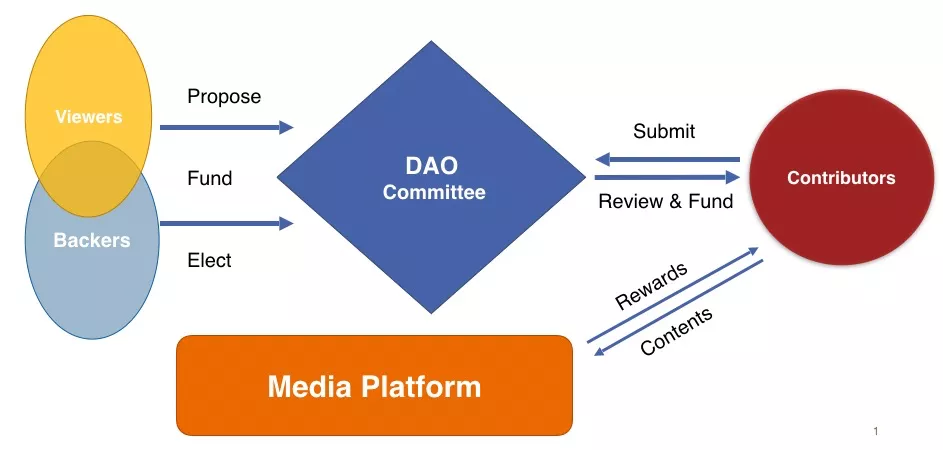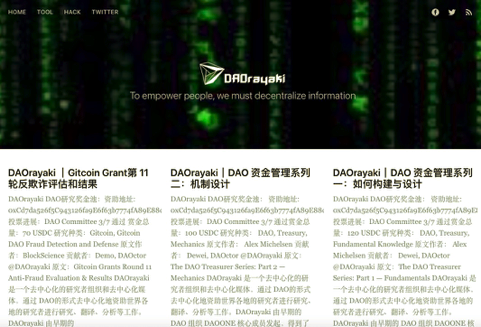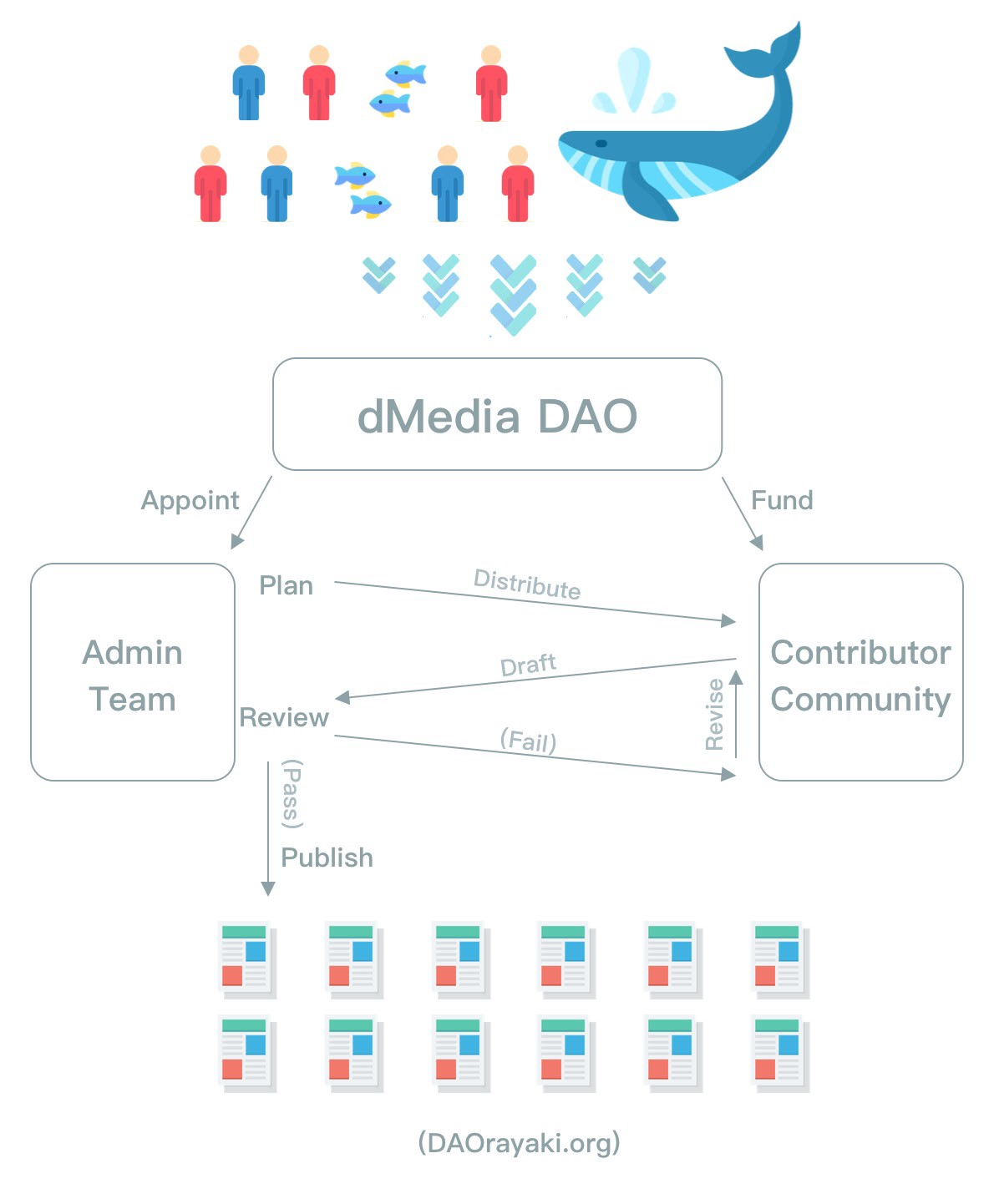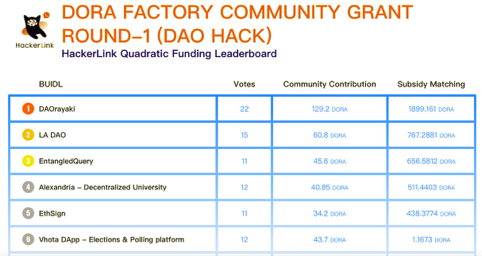Special thanks to the DAOrayaki team and DAOctor for feedback and review.
It has been a long time that people from all over the world are disappointed with the media. In recent years, the media industry faces many challenges — polarization of opinions, authenticity of contents, partisan reporting, and sometimes media groups become smear campaign battle grounds that mislead and divide people.
In February, a mechanism to run a decentralized media via a DAO was originally proposed in an article. A brief translation to English can be found here:
Decentralized Media vs. Centralized Media
The core of the mission to decentralize media is to decentralize the funding of media. Centralized media groups are controlled by corporate boards, which are ultimately controlled by shareholders who often do not truly represent the interests of the audience. The separation of shareholders and readers (viewers) is the most important characteristic of centralized media today.
In order to decentralize a media, readers and funders must be in the same community, readers must be able to become funders, and participate in the governance of the media. The readers themselves need to be the “shareholders” of the media, and control the media via governance procedures.

However, it is nearly impossible to achieve this goal with traditional corporate structures for the following reasons:
- Entry barrier is high
- Lack of transparency
- Code is NOT law, community has little control
In the Feb article, it was designed to use DAO as a vehicle to run a decentralized media, which allows the community to fund and govern the media. It was not clear how specifically such a decentralized media DAO could be implemented in practice. Over the past 8 months, DAOrayaki has made this idea a reality.
How DAOrayaki Works
DAOrayaki was built by a group of DAO enthusiasts. It organized itself via a DAO (the DAOrayaki DAO).
Although there is a vision of creating a fully functioning decentralized media that is controlled by the community (the people), DAOrayaki focuses on only one topic at the beginning. It gathered a group of highly motivated researchers to produce articles that cover the current developments and status of DAOs and decentralized governance.

There are three types of coverage — mechanism research, project reports, and DAO tooling. Each week, the admin team (committee) of the DAO hand picks a list of state-of-the-art topics and distributes the corresponding tasks to the contributor community. The contributor community is a network of PhDs, crypto enthusiasts, DAO OGs, and even high school students. After completion of the tasks, the articles are submitted to a review group for pre-publication voting. The review group initially consists of 7 DAO fans who are highly involved in DAOs and blockchain infrastructure project governance, The review group then votes for the articles based on a Moloch-like rule. Articles that receive a pass from the review group will be published on the DAOrayaki website (daorayki.org).
The whole process look like this:

Results
Over the past 6 months, the DAOrayaki contributor community contributed 161 articles, covered 61 projects, published 84 original research articles, it was well received by its community and beyond. It received the largest matching funding from Dora Factory Community QF Round-1 and more than 3500 users contributed to the DAOrayaki grant during the Gitcoin GR11.

Next Phase — Pushing The Boundary of Decentralized Media Governance
While an increasing number of readers and contributors are joining the community, DAOrayaki DAO needs to establish a governance workflow that is transparent and effective. It needs to decentralize control and empower the community while protecting efficiency and competitiveness as a media.
It sounds like a contradicting task. However, if we look at Figure 3 and break down the procedure, any task can be classified into either one of the two baskets of decentralization and efficiency.

On the right side of the spectrum is the heart of decentralized media governance — funding contributors, proposal voting, and election of the DAO committee (admin team). On the left side of the spectrum are the functions that can hardly change the nature of a decentralized media and require efficiency (e.g. some daily administration tasks).
Decentralizing the Editorial Board — Planning, Review, Publication
The clouds in the middle of the spectrum outline some functions of a decentralized media that could swing between decentralization and efficiency. Such functions do not limit to the three in Figure 5, however, they can be generally classified as “governance of content”, or decentralizing the editorial board.
Topic planning is the most important task of both cMedia editorial boards and dMedia execution committees. Decentralization of topic planning means community involvement of topic proposals and decision making. Various governance mechanisms and techniques can be used to make it happen. One example is to allow the community to propose trending topics and vote for the topics they care about with a Futarchy prediction market.
The review process can also be decentralized to a certain extent. Traditionally, an editorial board consists of experts who are familiar with the topics and follow up the topics closely, which gives them legitimacy to check the content before publication. In a decentralized media, the community can review content together with the committee. An incentive mechanism can be designed to encourage community review in addition to expert review, which does the check & balance and avoids possible censorship during the review.
Conclusion
It is extremely encouraging to see the pioneering work DAOrayaki team has accomplished — implementing one of the first decentralized media and making it ACTUALLY WORK. With an expanding reader community and a growing contributor network, there are challenges to further complete the mechanism design and implementation of dMedia governance, or the DAOrayaki governance. The DAOrayaki team has already been moving forward to take on these challenges. If they succeed, then we will have a minimum trustable media, which lays the foundation of a truly community-owned media for broader mainstream content!